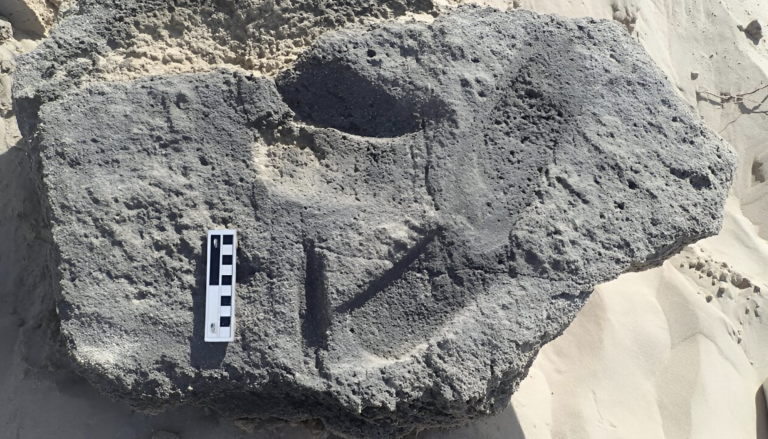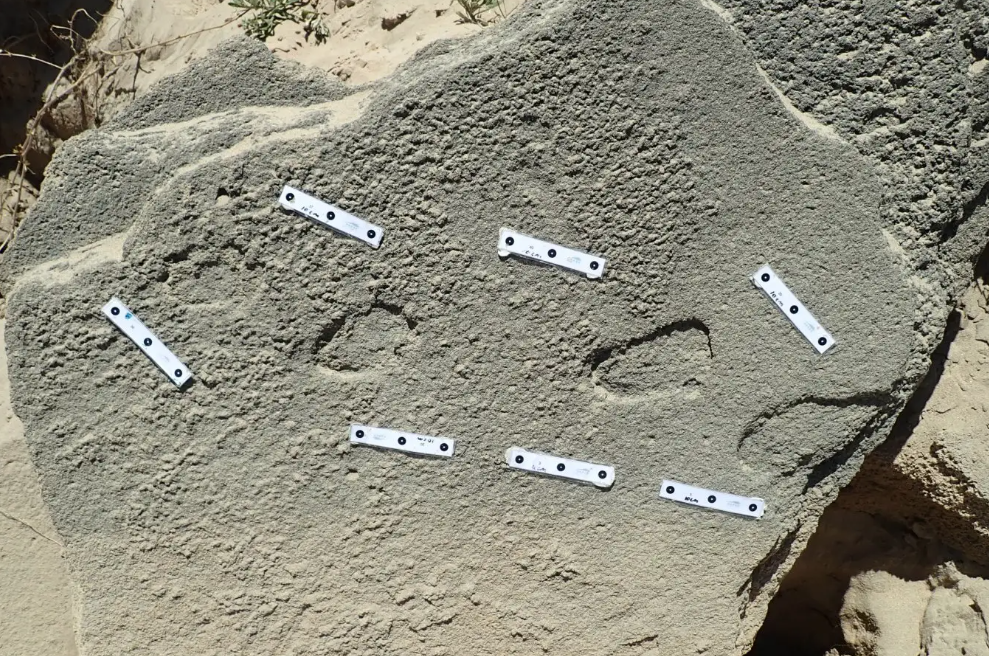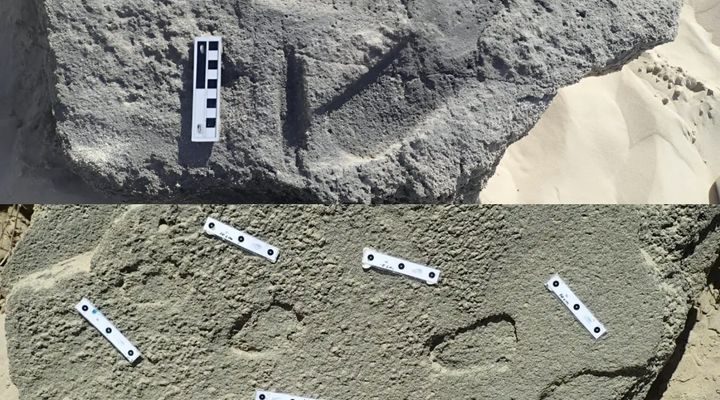South Africa’s Cape coast has been a goldmine for ichnologists.
The quest to uncover the earliest evidence of human footwear isn’t through remnants of shoes themselves, but rather in the footprints our ancestors left behind. The discipline of ichnology – the study of ancient tracks – shines light on this millennia-old mystery.

South Africa’s Cape coast has been a goldmine for ichnologists. Over the last 15 years, scientists from the Cape south coast ichnology project have cataloged over 350 vertebrate track sites here. Many of these tracks undoubtedly belong to barefoot humans, evidenced by clear toe impressions. However, a few tracks stand out, lacking these toe marks, leading scientists to a tantalizing hypothesis: could these have been made by humans wearing some form of footwear?

From Crafting to Tracking
After delving into research and technological milestones of our ancestors, two prime footprint regions emerged for scientists: western Europe and South Africa’s Cape coast. Scientists took a hands-on approach, crafting potential ancient footwear based on what our ancestors might have worn during the age range of 70,000 to 150,000 years ago.
Scientists’ research, as featured in the journal Ichnos, highlights three Cape south coast tracksites possibly bearing the marks of shoe-wearing humans. While earlier suggestions point to four sites in western Europe, their discoveries place southern Africa on the map as a crucial region of early human cognitive and practical evolution.

A Deeper Dive into The Study
The ancient dunes our ancestors traversed are now cemented as aeolianites. As scientists had already explored barefoot tracks of Homo sapiens along this coast, their attention was drawn to three specific sites with distinct footprints but no toe impressions.
Inspired by the footwear of the indigenous San people of the Kalahari desert and the earliest known shoe samples, scientists crafted different shoe designs. Tests on the beaches and dunes of the Cape south coast followed, and their analysis showed a consistent pattern with the fossil tracksites.
Deciphering the Prints
Identifying genuine footprints of our footwear-wearing ancestors, as opposed to poorly preserved or eroded tracks, became the next challenge for scientists. Clear track outlines and evidence of potential strap marks were pivotal for them.
Although the exact ages of these sites remain undetermined for scientists, adjacent dated sites hint they’re between 70,000 and 130,000 years old. While their findings are compelling, scientists continue their search for even more definitive evidence.
Stepping into the ‘Why’
But why did our ancestors transition from going barefoot to wearing shoes? Scientists hypothesize that with the evolution of bone tools enabling complex clothing creation, footwear may have been the next step. The rugged and sharp terrains of the Cape coast, combined with the severe implications of injuries like infections during the Middle Stone Age, could have been a significant driving factor. Furthermore, protection against temperature extremes might have also prompted the sporadic use of shoes.



